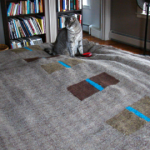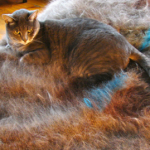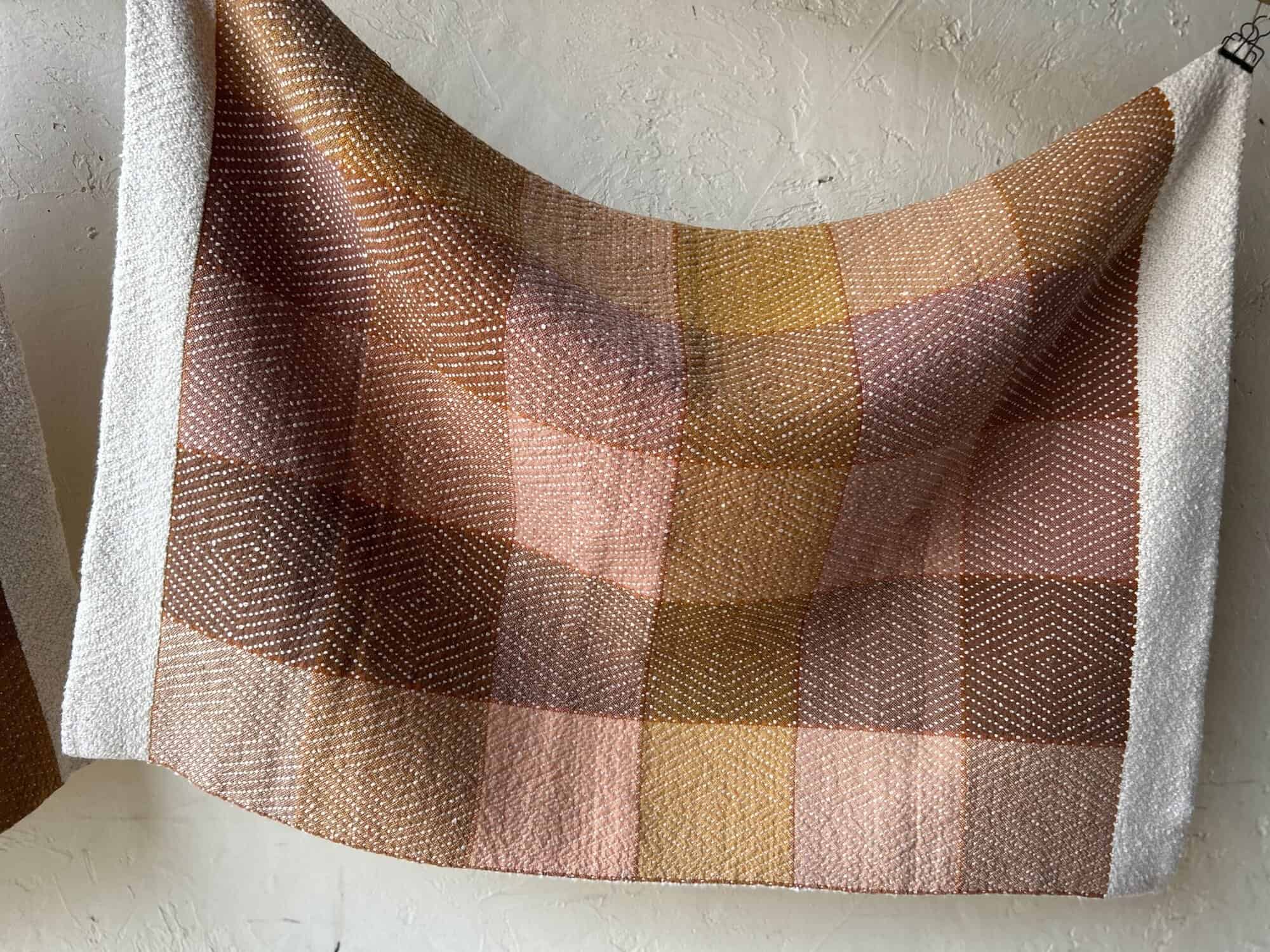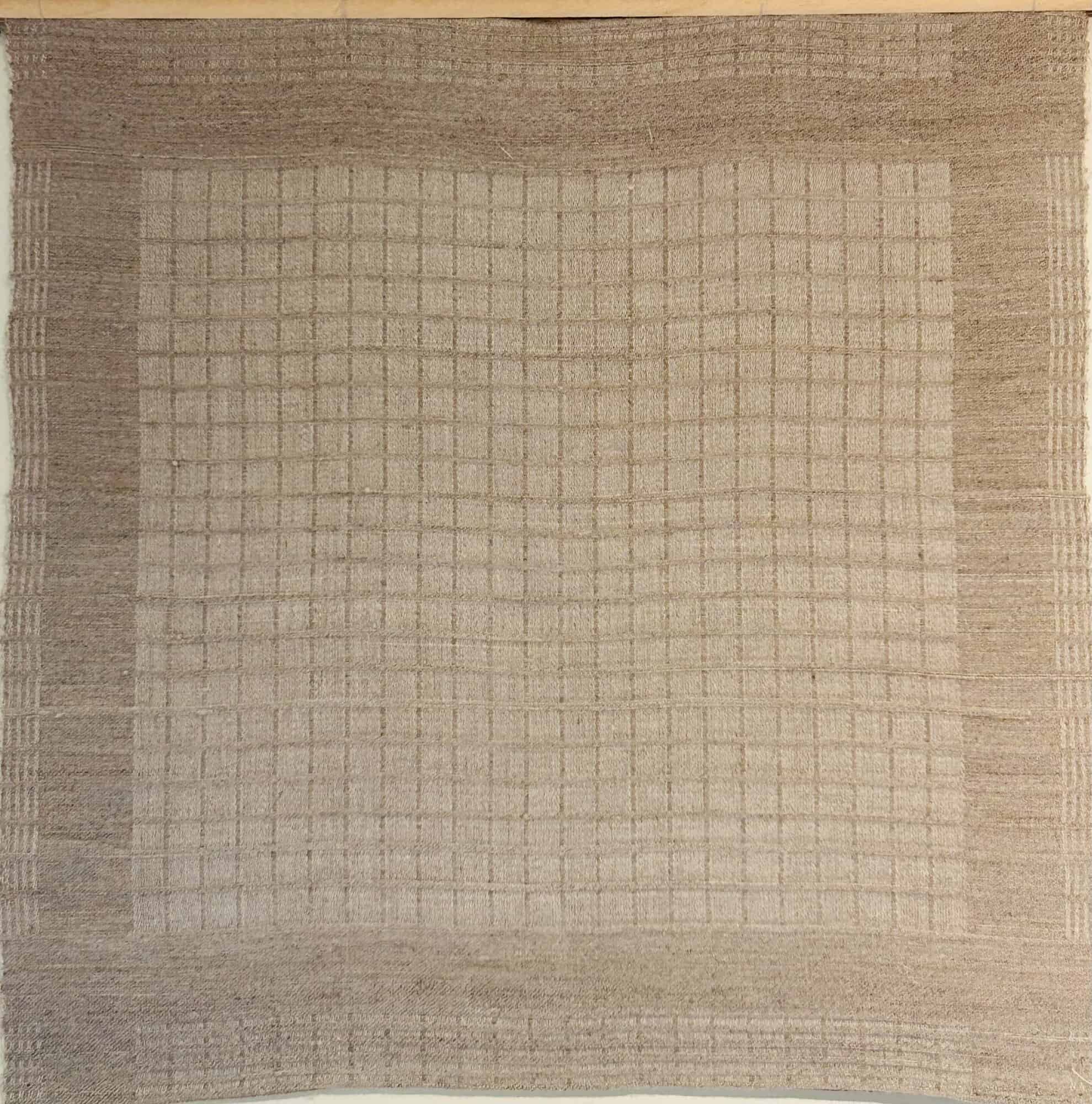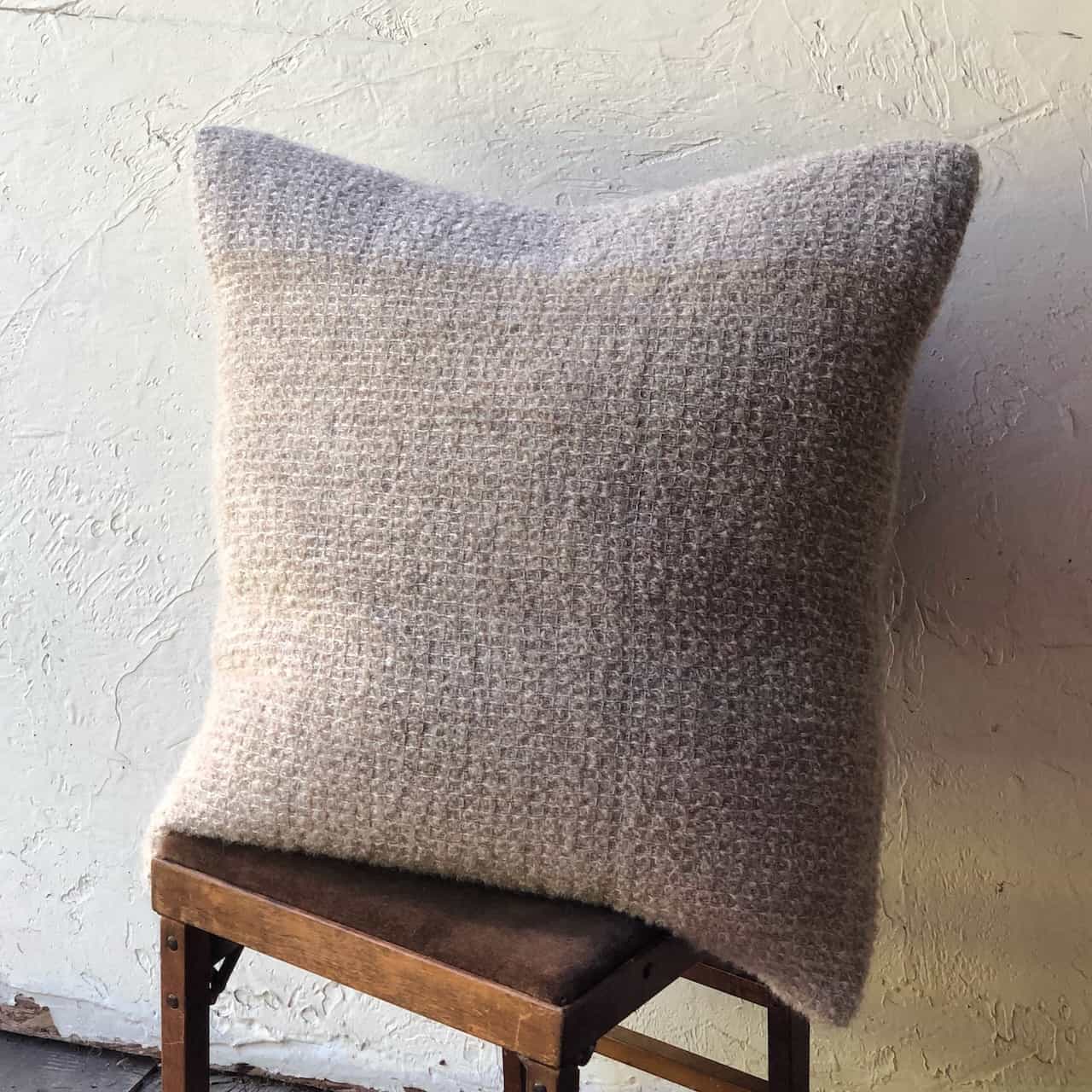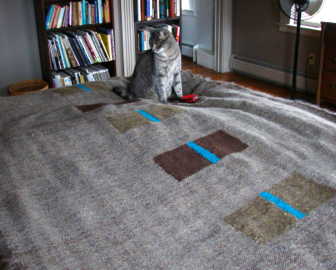
Creative Process
I have to blog about something that is always on/in my mind but was brought to the surface by this last mohair project – the creative process. In weaving, calculation, consistency and control are areas that elude me. I have ideas, some knowledge and certainly enthusiasm, but my precision is poor. What’s up with the alliteration? Anyway, I keep thinking that if I carefully plan a project with all variables in mind, weave with care and consistency and stop myself when I want to mess with the “plan”, then I will produce projects that I ca be proud of. Easier said than done, but a good goal, right?
This mohair project, which I am proud of, came about due to my failing to do all the above. Here’s how. I had to do a “Novelty” yarn project for the Master Weaver Certificate. Mohair is apparently a novelty yarn and certainly one of my favorite materials. So I decided to weave a somewhat comical “color and weave” large-ish scale mohair houndstooth with mohair that I have in my stash. I drafted the design using the straight draw threading and epi for a mohair blanket that I had recently woven on my 4-shaft Harrisville – so I could tie on. (Mistake # 1) After a couple of false color starts I decided on a chocolate brown and brindle grey brown for the checks. I didn’t have enough to use the mohair doubled, so I chose 1 thread of 2/8 wool and 1 of mohair used together and sett at 6 epi – (2 per heddle 2 per dent).
It looked great on the loom. I started weaving and immediately saw two obvious errors in my plan. The first is that the sett was for plain weave (doh!), and the houndstooth is a twill. The twill looked really good and textural, but was weft faced because the sett was too loose. Mistake #2 was that I wanted bigger houndsteeth(?) so I made my color repeats 6 ends instead of 4. This made a slightly off-kilter tooth which was okay(ish) in the draft but once combined with fuzzy mohair and weft-faced-ness became completely unreadable on the loom. Okay, re-sley? No, too narrow for a throw. Weave a plain weave check. Maybe – not too inspiring . . . Uh oh, what I thought were 2 cones of the chocolate mohair were revealed in daylight to be 1 chocolate and 1 caramel (mistake #3). So, I couldn’t do a check because I didn’t have enough brown. I did have a lot of a lovely, but slightly weird light grey/brown. I started to use the grey/brown in plain weave. It was okay, but certainly too dull for the whole blanket. Just then my husband walked by, saw what I was doing and said, “Wow, that turquoise is a good idea.” What? Oh, I had used an old bobbin of some turquoise chenille for a header, but, yeah, it did look good. Hmmm, so I used the chocolate and brindle that I did have with a little turquoise for insets to liven up the grey brown. And the project was born out of errors, serendipity, and epic planning failure.
The moral of the story is (I think) that for a portion of the weaving year one should mess around, experiment, be free and break the rules either intentionally or unintentionally. Then one should pick some of the “discoveries” from the experimental period – reweave, refine and perfect them. This will create a perfect blend of inspiration and innovation with good craftsmanship. Now, to see about planning my year around weaving inspiration . . .

